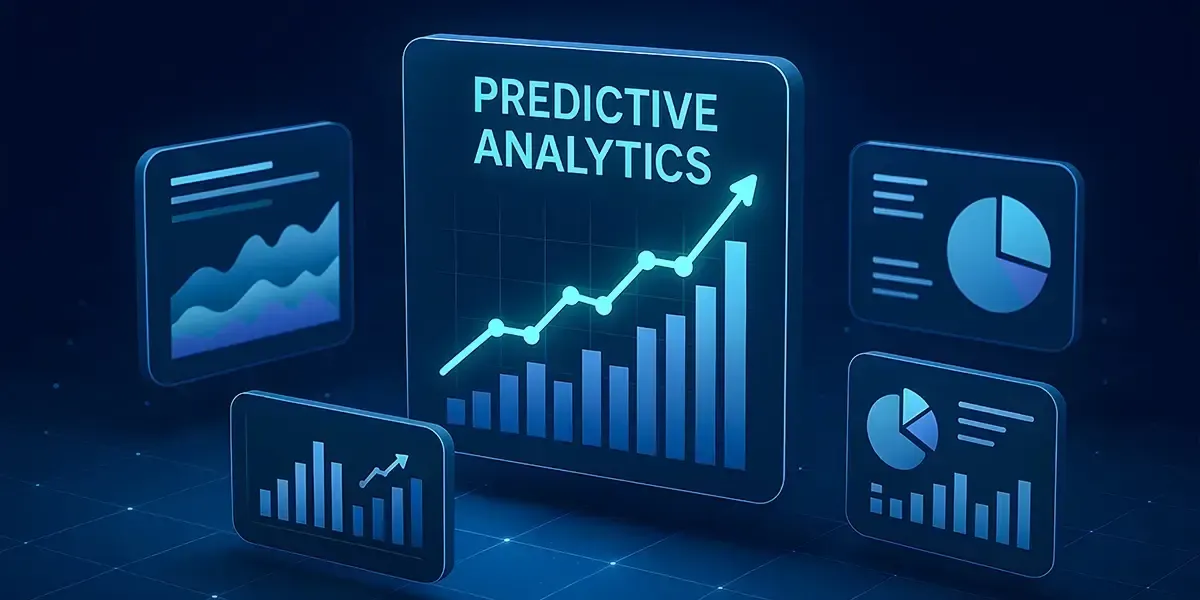
Reducing Charge-Offs with BHPH GPS Tracking | GPS LEADERS
Reducing Charge-Offs with BHPH GPS Tracking: How Data Predicts Delinquency Before It Happens
Every Buy Here Pay Here (BHPH) dealer knows the feeling: a customer misses a payment, stops answering calls, and suddenly your collateral—and your capital—is at risk. In a business where you finance the vehicle yourself, a single charge-off can erase weeks of margin.
But what if you could see delinquency coming before it hits your books?
That’s exactly what modern GPS-based BHPH tracking delivers: early-warning signals that expose risk in real time. By reading vehicle usage patterns, ignition events, and movement data, dealers can predict payment trouble long before default—and take action to prevent it.
In this article, we’ll explore how usage data helps dealers cut charge-offs, the compliance framework behind it, and how GPS Leaders’ BHPH Tracking turns insight into portfolio protection.
The BHPH Landscape: Rising Risk, Shrinking Margins
BHPH remains a vital financing channel for sub- and near-prime buyers, but macro conditions are tightening.
The Federal Reserve Bank of New York reported that auto-loan delinquencies exceeded 7.5 million accounts in 2024, marking the highest total since the Great Recession (Fed NY Consumer Credit Panel, 2024).
TransUnion data show that 60-day delinquencies for subprime auto loans rose to 5.37%—a 20-year high—driven by inflation and stretched household budgets (TransUnion Q3 2024 Credit Report).
Meanwhile, operating costs for independent dealers climbed more than 12% year-over-year, according to the National Independent Automobile Dealers Association (NIADA) (NIADA Used Car Industry Report 2024).
Every one of these trends squeezes cash flow. When delinquencies spike, charge-offs follow—and few BHPH dealers can absorb more than a few percentage points of loss without pain.
That’s why data-driven asset monitoring has become an operational necessity, not a luxury.
The Science of Predicting Delinquency
Traditional collections depend on lagging indicators—missed payments, phone silence, broken promises. By then, recovery odds have already dropped.
Predictive BHPH tracking flips that timeline. Using GPS-derived behavioral data, you can identify at-risk accounts days or weeks before default. Here’s how:
1. Irregular Vehicle Usage
When a customer’s driving pattern suddenly changes—less daily movement, longer idle periods, or unusual out-of-state trips—it often signals payment distress. People who lose jobs or relocate unexpectedly tend to drive differently before they miss a due date.
A 2024 U.S. Department of Labor report noted that sudden employment disruptions are the leading trigger for payment delinquency within 60 days of job loss (BLS Labor Dynamics 2024).
2. Ignition and Movement Events
If a vehicle stops moving for multiple days or shows nighttime relocation to unfamiliar zones, the customer may be hiding or pre-empting repossession. Automated alerts catch these anomalies long before your collections staff realizes a payment is past due.
3. Power Disconnect or Tamper Alerts
A customer disconnecting a tracker or the vehicle’s battery often precedes default or concealment. Prompt follow-up can prevent permanent loss.
4. High Idle / No Mileage Correlation
Extended idling with little mileage can indicate the vehicle is parked for long periods—suggesting unemployment, relocation, or mechanical neglect.
Each of these patterns acts as a behavioral credit signal—one that most BHPH systems never see until it’s too late.
Why Early Action Matters
Once a payment is missed, recovery probability drops fast.
According to Consumer Financial Protection Bureau (CFPB) research, more than 65% of delinquent subprime borrowers who miss two consecutive payments end up defaulting within 90 days (CFPB Auto Finance Data 2023).
But when dealers contact customers within the first 48 hours of irregular activity, resolution rates soar. Communication, payment-plan adjustments, or even simple reminders often avert repossession entirely.
BHPH tracking gives you those 48 hours—before the loss clock starts.
Turning GPS Data into Actionable Collections Workflows
Step 1: Define Risk Signals
Work with your tracking platform to define alerts for:
Ignition inactivity (no start for 3+ days)
Repeated late-night movement after payment due
Out-of-state travel exceeding 48 hours
Power loss or tamper events
Each alert should generate an internal task: “Contact customer—verify account standing.”
Step 2: Integrate with Your Dealer-Management System (DMS)
Automation ensures your collectors see risk alerts alongside payment history. A CRM integration can automatically flag accounts as “watch list” based on data thresholds.
Step 3: Create Proactive Outreach Scripts
Train staff to call with empathy and compliance:
“Hi [Name], we noticed your vehicle hasn’t been active lately. We just wanted to make sure everything’s okay—are you having any issues with the vehicle or payment schedule?”
Soft touches like this often uncover solvable issues—job changes, bank transitions—before accounts spiral.
Step 4: Document, Don’t Guess
Every event and call note should feed your portfolio analytics. Over time, you’ll see which patterns truly predict risk in your customer base.
The Compliance Side: Doing It Right
Regulators understand that GPS tracking, when transparent and well-governed, is a legitimate asset-protection tool. What matters is disclosure, consent, and data stewardship.
Disclosure: Clearly state in your retail installment contract that a GPS device is installed for collateral protection.
Consent: Obtain customer acknowledgment at signing; most states require this.
Data Security: Under the FTC Safeguards Rule (amended 2023), dealers are financial institutions and must secure any personally identifiable information—including location data (FTC Safeguards Rule 2023).
Use Limitation: Access location data only for legitimate business purposes—collections, recovery, or compliance documentation.
When these principles are met, tracking strengthens—not jeopardizes—consumer protection.
Quantifying the ROI of Predictive Tracking
The math behind proactive GPS management is compelling.
Even modest improvements yield outsized impact.
A 100-vehicle BHPH portfolio with $10,000 average note value cutting charge-offs from 12% to 9% saves $30,000 in principal—before interest and fee recovery.
Case Study: Preventing a Loss Before It Happened
An Alabama BHPH dealer noticed through their GPS dashboard that one financed vehicle had not moved for five days, and the customer’s payment was due in two. A “no-movement” alert triggered an outreach call.
The customer explained he had been laid off but expected a new job within a week. The dealer offered a short deferral and kept communication open. The account never charged off.
Without that early insight, the vehicle might have disappeared and the loan written off.
This is the everyday power of predictive tracking—a quiet, data-driven intervention that keeps portfolios profitable.
This micro-segmentation helps you deploy limited collections staff more effectively—focusing on high-risk accounts first.
Think of it as credit scoring in real time, powered by GPS.
Integrating Maintenance and Payment Data
Mechanical breakdowns often precede delinquency. If a customer can’t drive, they can’t earn—and can’t pay.
Fleet-level GPS data helps you see which vehicles have high engine-hour use, frequent idling, or potential low-battery signals—indicators of pending mechanical issues. Coordinating early service or replacement can prevent missed workdays and keep payments flowing.
The American Transportation Research Institute reports that unplanned repairs add $500–$1,000 per vehicle annually in downtime and logistics (ATRI Maintenance Study 2024). Preventing even one failure per vehicle boosts cash-flow continuity.
From Recovery Tool to Relationship Tool
Old-school tracking was about repossessions. Modern BHPH tracking is about relationships—using data to coach customers, not chase them.
Transparency builds trust: Customers appreciate knowing their dealer has a system to help them stay on track.
Communication prevents defaults: Early outreach shows empathy and professionalism, not suspicion.
Reputation protection: Data-driven decisions help you treat customers consistently and document fairness.
Dealers who use tracking ethically tend to earn stronger Google reviews and referrals—an often-overlooked ROI.
Why GPS Leaders Is Built for Predictive BHPH Operations
GPS Leaders BHPH Tracking was engineered around dealer-lender workflows—not generic fleet features. It empowers you to predict, prevent, and protect:
Real-Time Alerts: Ignition, movement, idle, and tamper signals highlight accounts needing attention.
Behavior Analytics: Spot early signs of delinquency before the first missed payment.
Compliance Support: Disclosure templates and data-security practices align with the FTC Safeguards Rule.
Recovery Readiness: When repossession is unavoidable, instant location visibility cuts recovery time dramatically.
Portfolio Reporting: Identify patterns across hundreds of contracts to fine-tune underwriting and collection strategies.
Learn more at GPS Leaders BHPH Tracking.
Key Takeaways
Delinquency prediction is real: Changes in driving and ignition patterns signal risk days before payment failure.
Early intervention pays: Contacting customers within 48 hours of abnormal behavior prevents many charge-offs.
Data-driven tracking enhances compliance: Transparent disclosure plus secure data handling meet FTC standards.
GPS Leaders turns insight into action: Real-time alerts, risk analytics, and portfolio reporting keep BHPH operations profitable and compliant.
Conclusion
Don’t wait until payments stop.
👉 Visit GPS Leaders BHPH Tracking or Schedule a Demo and see how predictive data can reduce your charge-offs, improve cash flow, and safeguard your inventory.
Protect your vehicles. Predict your risk. Grow your profits—with GPS Leaders.




